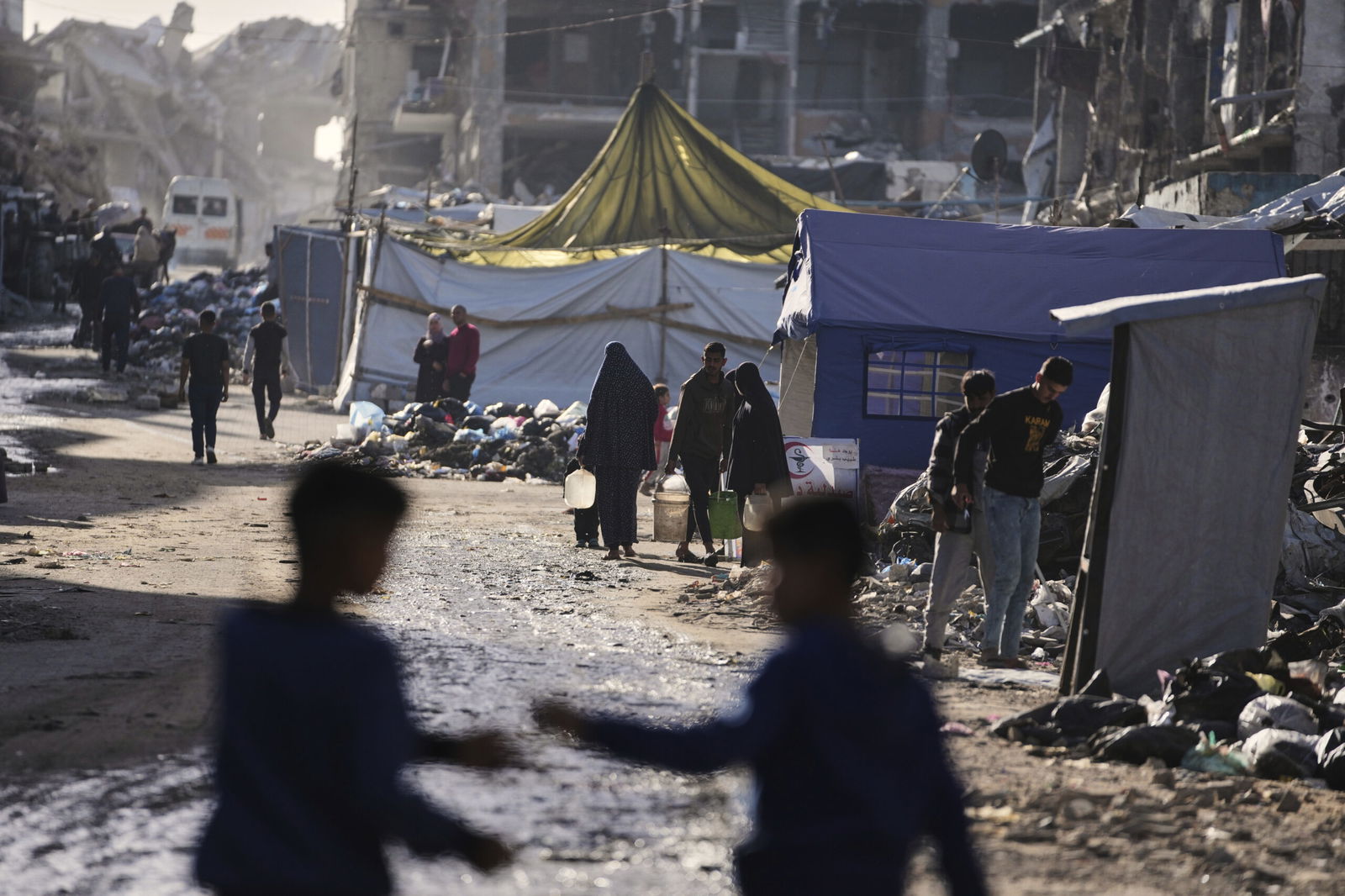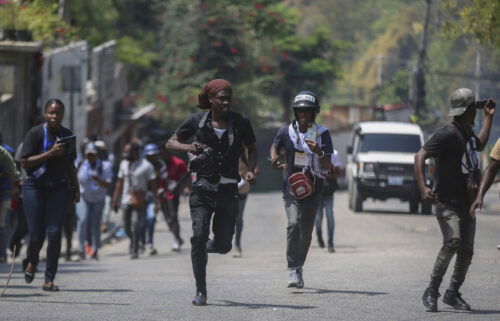Netanyahu says Israel will establish a new security corridor across Gaza to pressure Hamas

By WAFAA SHURAFA and ISAAC SCHARF
Associated Press
DEIR AL-BALAH, Gaza Strip (AP) — Prime Minister Benjamin Netanyahu said Wednesday that Israel is establishing a new security corridor across the Gaza Strip to pressure Hamas, suggesting it would cut off the southern city of Rafah, which Israel has ordered evacuated, from the rest of the Palestinian territory.
The announcement came after Netanyahu’s defense minister said Israel would seize large areas of Gaza and add them to its so-called security zones. A wave of Israeli strikes, meanwhile, killed more than 40 Palestinians, nearly half of them women and children, according to Palestinian health officials.
Israel has vowed to escalate the nearly 18-month war with Hamas until the militant group returns dozens of remaining hostages, disarms and leaves the territory. Israel ended a ceasefire in March and has imposed a monthlong halt on all imports of food, fuel and humanitarian aid.
Netanyahu described the new axis as the Morag corridor, using the name of a Jewish settlement that once stood between Rafah and Khan Younis, suggesting it would run between the two southern cities. He said it would be “a second Philadelphi corridor ” referring to the Gaza side of the border with Egypt further south, which has been under Israeli control since last May.
Israel has reasserted control over the Netzarim corridor, also named for a former settlement, that cuts off the northern third of Gaza, including Gaza City, from the rest of the narrow coastal strip. Both of the existing corridors run from the Israeli border to the Mediterranean Sea.
“We are cutting up the strip, and we are increasing the pressure step by step, so that they will give us our hostages,” Netanyahu said.
The Western-backed Palestinian Authority, led by rivals of Hamas, expressed its “complete rejection” of the planned corridor. Its statement also called for Hamas to give up power in Gaza, where the militant group has faced rare protests recently.
In northern Gaza, an Israeli airstrike hit a U.N. building in the built-up Jabaliya refugee camp, killing 15 people, including nine children and two women, according to the Indonesian Hospital. The Israeli military said it struck Hamas militants in a command and control center.
The building, previously a clinic, had been converted into a shelter for displaced people, with more than 700 residing there, according to Juliette Touma, a spokesperson for the U.N. agency for Palestinian refugees, the main aid provider in Gaza. No U.N. staff were wounded in the strike.
She said U.N. staff warned people about the dangers of remaining there after Wednesday’s strike but that many chose to stay, “simply because they have absolutely nowhere else to go.”
U.N. says most of Gaza is a ‘no-go’ zone
More than 60% of Gaza is now considered a “no-go” zone because of Israeli evacuation orders, according to Olga Cherevko, a spokesperson for the U.N. humanitarian aid office. Hundreds of thousands people are living in squalid tent camps along the coast or in the ruins of their destroyed homes.
Israeli Defense Minister Israel Katz earlier said Israel would seize “large areas” and add them to its security zones, apparently referring to an existing buffer zone along Gaza’s entire perimeter. He called on Gaza residents to “expel Hamas and return all the hostages,” saying “this is the only way to end the war.”
On Sunday, Netanyahu said Israel plans to maintain overall security control of Gaza after the war and implement President Donald Trump’s proposal to resettle much of its population elsewhere through what the Israeli leader referred to as “voluntary emigration.”
Palestinians have rejected the plan, viewing it as expulsion from their homeland after Israel’s offensive left much of it uninhabitable, and human rights experts say implementing the plan would likely violate international law.
Hamas has said it will only release the remaining 59 hostages — 24 of whom are believed to be alive — in exchange for the release of more Palestinian prisoners, a lasting ceasefire and an Israeli pullout. The group has rejected demands that it lay down its arms or leave the territory.
Concern over hostages
The decision to resume the war has fueled protests in Israel, where many fear it has put the hostages at grave risk and are calling for another ceasefire and exchange with Hamas.
The Hostage Families Forum, which represents most captives’ families, said they were “horrified to wake up this morning to the Defense Minister’s announcement about expanding military operations in Gaza.”
The group called on the Trump administration, which took credit for brokering the ceasefire but has supported Israel’s decision to end it, to do everything possible to free the remaining captives.
“Our highest priority must be an immediate deal to bring ALL hostages back home — the living for rehabilitation and those killed for proper burial — and end this war,” the group said.
Strikes kill dozens
In addition to the 15 killed in northern Gaza, Israeli airstrikes overnight into Wednesday killed another 28 people across the territory, according to local hospitals. The Nasser Hospital in the southern city of Khan Younis said the dead included five women, one of them pregnant, and two children.
Israel says it targets only militants and makes every effort to spare civilians, blaming Hamas for their deaths because the militants operate in densely populated areas.
Two projectiles were fired out of Gaza late Wednesday and intercepted, the Israeli military said. It later issued evacuation orders for several communities in northern Gaza, “with a focus on shelters,” indicating it would soon carry out retaliatory strikes.
The war began when Hamas-led militants attacked southern Israel on Oct. 7, 2023, killing around 1,200 people, mostly civilians, and taking 251 hostages, most of whom have since been released in ceasefire agreements and other deals. Israel rescued eight living hostages and has recovered dozens of bodies.
Israel’s offensive has killed more than 50,000 Palestinians, according to Gaza’s Health Ministry, which doesn’t say whether those killed are civilians or combatants. Israel says it has killed around 20,000 militants, without providing evidence.
The war has left vast areas of Gaza in ruins and at its height displaced around 90% of the population.
___
Scharf reported from Jerusalem. Associated Press writers Elena Becatoros in Athens, Greece; Bassem Mroue in Beirut; and Sam Mednick in Tel Aviv, Israel, contributed to this report.
___
Follow AP’s war coverage at https://apnews.com/hub/israel-hamas-war




